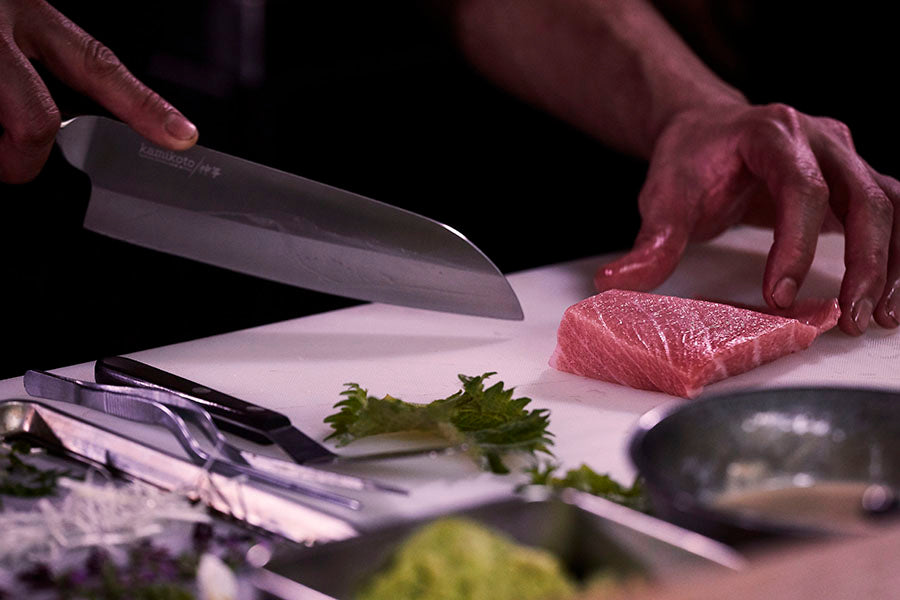
A career in the culinary arts requires dedication, tenacity, excellent organizational and time-management skills and above all, a passion for food.
What are the Culinary Arts?
The ‘culinary arts’ is defined as the practice of preparing food. The definition is as broad as the field itself as there are many different culinary art careers to choose from as well as techniques one can earn about.
Culinary arts areas of study:
- Specific cooking techniques
- Specific cuisine knowledge
- How to balance taste
- Food aesthetics and plating
- Menu planning
- Business management (kitchen management, how to run a restaurant, marketing, budgeting etc)
- Food science
Which Careers Are Part of the Culinary Arts?
There are a number that sit under the culinary arts umbrella, all in diverse workplaces.
Professionals in this arena can be employed in restaurants, cafes, hotels, cruise ships, large offices, big events, on yachts or in private homes. They may work under the tutelage of an expert chef or once they have enough experience, branch out on their own with a catering business or restaurant. They may even prefer to pursue the business side of the culinary arts, food science or quality assurance.
The following is a list of some culinary arts careers as well as a few example training programs.
Note: the list by no means exhaustive, but instead provides an overview of the field.
Culinary Arts Careers:
- Chef (including varying levels of qualification of skill)
- Executive Chef
- Caterer
- Food Service Manager
- Bartender
- Mixologist
- Food scientist
- Quality Assurance Specialist/Food quality assurance manager
- Food Service Manager/Restaurant Manager
Training programs in culinary arts:
- Professional cooking techniques
- Catering
- Food styling and media
- Food science
- Hospitality management
- Dietetics
Chefs
Within the culinary arts, there is a defined hierarchy of chefs associated with various cooking stations within a restaurant.
The master chef of the kitchen can be known by a few different names – head chef, executive chef or chef de cuisine. They are responsible for overseeing the running of the kitchen, menu planning and quality assurance.
Next in line is the sous chef, who is the ‘second-in-command’ and has a few overlapping roles with the head chef but is more hands-on.
The line cooks/chefs follow and are those in charge of specific cooking stations. Lastly, there are the junior chefs - often referred to as ‘commi’s’ - who are usually recent graduates.
Some establishments may also employ a kitchen hand for basic food preparation (ie peeling onions and potatoes). For those who are unsure about a culinary career, this can be a good starting point as it will give them a small taste of how a professional kitchen runs.
Private Chef
A burgeoning area of the culinary arts is that of the private chef. A private chef works for one major client usually both living and working in the client’s home. They are responsible for all meal preparation and must be ‘on-call’ for snacks or special events. Travel with the clients for holidays or business may be required.
Personal Chef/Independent Caterer
A personal chef serves multiple clients, often preparing multiple meals in the client’s homes in advance for them to reheat during the week. As such, personal chefs run their own businesses and need to be able to handle both food planning and preparation plus the business side of things.
Caterers differ slightly from personal chefs as they cook on large scales for big events. Some may cook on-site while others must cook and then transport food to the venue. Keeping food at the correct temperature and ensuring it’s aesthetically pleasing are but two challenges caterers face.
Restaurant Manager or a Food Service Manager
While head chefs oversee the running of the kitchen, a restaurant manager is responsible for running the ‘floor’. This involves managing all wait staff and also dealing with customers directly. They need excellent communication and time management skills and should be reasonably fit to withstand many hours on their feet, flitting from staff to customers to liaising with the kitchen.
Quality Assurance Specialist/Food Quality Assurance Manager
Quality assurance managers ensure food products meet required safety standards. As such, they must have in-depth knowledge about food ingredients, hygiene, food handling, safety procedures and government regulations. They may also respond to customer complaints and often manage a team of food inspectors so also require excellent management skills.
How to Get Started in a Culinary Arts Career
A large majority of people interested in a culinary arts career hold the dream of becoming a professional chef. They may have developed this love while cooking for family and friends, or have always had a burning passion for food.
For such people, a good place to begin is to obtain some on-the-job work experience to determine if the restaurant environment is a good fit. While these jobs may be lowly paid and require a low skill level, they are a good way to ‘test the waters’.
For those serious about a career in the culinary arts, formal training is important. The following section details what type of training is widely available.
Where to Study
While not compulsory in many countries, formal training offers many benefits for a well-rounded culinary career. It usually takes the form of a culinary degree, be it a certificate, diploma, associate’s degree, bachelor or masters. Each one has its own timeframe so for instance, a certificate may be six months of training but a bachelor three years.
Generally speaking, the choice of training depends on one’s goal. Those who wish to hone their cooking skills can opt for diploma or associate’s degree at a culinary arts school. But those who seek to run their own restaurant would benefit from a bachelor’s degree as it covers business topics as well.
Culinary degree programs teach the following (or a combination of):
- Culinary skills training (classical, modern, ethnic, cooking stations)
- Management & leadership skills
- Food & safety standards
- Business topics (accounting, inventory management etc)
Culinary Training Options - United States
There are a variety of US-based options available for training for a career in the culinary arts.
-
Certificates
Primarily aimed at those who have completed a number of years of on-the-job training in a restaurant setting. It is a way to formally test one’s knowledge and certify one has obtained the relevant skills.
-
Vocational/trade school
These institutions are often linked with high schools so students can learn culinary skills at an earlier stage, before they undertake a degree or get into the paid workforce. But they are also open to non-high school students and provide a good base level of training.
-
Community college
These colleges have similar programs as culinary schools but not at bachelor degree level. Students can opt to take a mixture of culinary and general course classes. It is usually a cheaper option than culinary school.
-
Culinary school
These institutions offer a number of different training options from certificates to diplomas to degrees with an incumbent training time (one to four years depending on the course). They are an excellent choice for those serious about becoming professional chefs as they have all the requisite facilities available on-site and adhere to a comprehensive curriculum. Many also operate apprenticeship programs combining paid on-site restaurant training and off-site classroom training.
Culinary Training Options - United Kingdom
As in the US, those who aspire to a culinary arts career need not undertake any formal training. They can simply work their way up through the restaurant hierarchy and/or gain an apprenticeship to combine study and on-the-job training.
The formal route is also similar to the United States ranging from certificates to diplomas through to bachelor degrees at culinary schools or universities. The higher degrees take around three years to complete covering the basics such as food preparation, food service and food hygiene through to advanced studies in gastronomy, wine and supervisory skills. These courses also often combine training at restaurants, teaching in classrooms and practice in the training kitchen.
Culinary Training Options – Europe
With over 4000 European institutions offering bachelors, masters and doctorate courses in the culinary arts, students are spoilt for choice. Their system is once again similar to other parts of the world but with a strong focus on culinary schools. They have a tremendously rich cooking school history with Le Cordon Bleu’s origins dating back to the late 1800’s.
Culinary Training Options – Australia
The Australian system of culinary arts training offers the following options:
- On-the-job training in a restaurant
- TAFE or private college – apprenticeship gaining a certificate or diploma in area of interest (ie chef, pastry chef etc)
- Culinary school – bachelor or associate degree
As previously mentioned, it takes a lot of perseverance to become a professional in the culinary arts space. While formal training is not often a prerequisite, it is an excellent way to refine and hone the right food preparations skills to set up a career in this highly sought after and acclaimed area.


